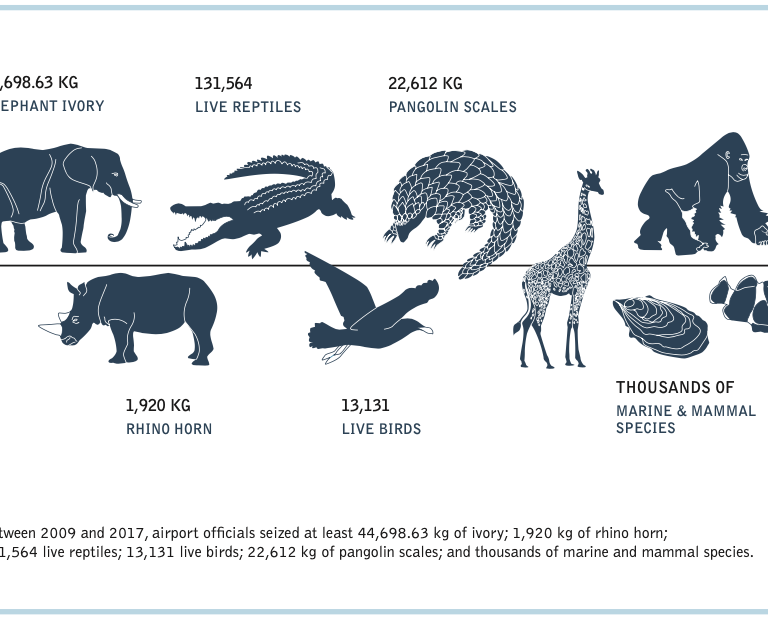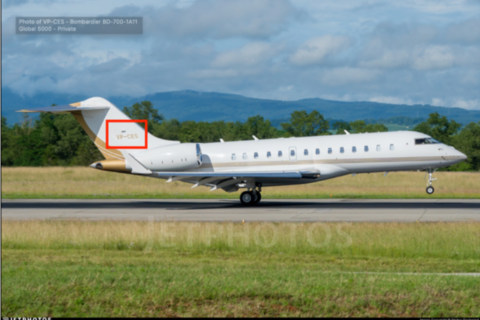The Perfect Seizure Press Release Does Not Exist…Or Does It
As part of the Reducing Opportunities for Unlawful Transport of Endangered Species (ROUTES) Partnership, we put together a wildlife seizure press release guide (including press release templates) that provides actionable recommendations for customs, enforcement agencies, and the private sector so that they can more effectively communicate wildlife seizures made within the aviation industry. Ultimately, improving wildlife seizure reporting will improve analysts’ ability to provide accurate, targeted information to customs, enforcement, and industry to support counter-wildlife trafficking measures in airports.
Of course, the recommendations contained within the Guide are not just relevant to wildlife; they can be applied to any type of seizure, from pangolin scales and abalone to narcotics or weapons.

How can press releases save animals? By standardizing data ingest and giving researchers a more effective and accurate way to track the wildlife trade. In Runway to Extinction, we use this data to highlight trends in wildlife trafficking in the air transport sector. In this post, we explore best practices in press release structure and content.
As cultures, economies, and transportation systems have become increasingly interconnected, so too have wildlife trafficking networks. Obscured by the sheer scale of passengers and cargo, traffickers have taken advantage of the air sector’s expanding global reach, and increasingly rely on international and domestic flights to move wildlife and wildlife products to markets. But as our latest report, Runway to Extinction, illustrates, wildlife trafficking through airports flies under the radar in part due to low awareness, limited public and private sector coordination, and a lack of standardized seizure protocols and reporting procedures.
One powerful, cost-effective tool to help tackle these challenges is the use of official press releases to share information about wildlife seizures. However, the less information a press release contains, the lower the quality of analysis produced using that information. Across jurisdictions, inconsistencies in press release format and content can challenge efforts to integrate wildlife seizure data and analyze global trafficking trends.
As part of the Reducing Opportunities for Unlawful Transport of Endangered Species (ROUTES) Partnership, we put together a wildlife seizure press release guide (including press release templates) that provides actionable recommendations for customs, enforcement agencies, and the private sector, enabling them to more effectively communicate wildlife seizures made within the aviation industry. Ultimately, improving wildlife seizure reporting will improve analysts’ ability to provide accurate, targeted information to customs, enforcement, and industry to support counter-wildlife trafficking measures in airports.
Why Press Releases? #
Representing an estimated $7 to 23 billion in illegal sales each year, wildlife trafficking represents one of the primary threats to biodiversity around the world, and could even pose a risk to public health. In order to combat enforcement challenges and prevent the continued exploitation of the air transport industry, governments, the private sector, and civil society require information – how, when, and where are wildlife and wildlife products trafficked? Are they more likely to be found in checked baggage or in air freight shipments? Well-written seizure press releases can be an invaluable source of this key information, becoming the raw material from which seizure databases can be built. Public seizure data can help civil society organizations analyze the data contained within press releases, pinpointing emerging trafficking trends and hotspots that enforcement can use to proactively target trafficking attempts.

Seizure press releases published by government authorities help ensure that officials retain control of the narrative and messaging associated with a particular seizure, reducing the spread of potentially inaccurate seizure information by the press. Press releases can also provide a space for customs and enforcement agencies to highlight other enforcement successes (i.e. a summary of other recent seizures, or an overview of changing trends in response to enforcement), and can underscore the relevant agency’s dedication to transparency.
In this way, seizure reports can have a deterrent effect on wildlife traffickers, who may come to recognize a certain airport as being particularly adept at stopping wildlife trafficking. Furthermore, industry, the public sector, and foreign governments are often unaware of the extent to which wildlife trafficking affects them because wildlife seizure information is published infrequently. Consistently disseminating wildlife seizure information in the form of press releases can therefore both educate industry and the public and inform foreign government agencies of seizures relevant to their countries.
Of course, the recommendations contained within the Guide are not just relevant to wildlife; they can be applied to any type of seizure, from pangolin scales and abalone to narcotics or weapons.
See the Best Practices Guide for more information about how to write informative press releases, including:
- A “data matrix” that maps the types of information that should be included in press releases by their analytical utility and potential sensitivity;
- Additional tips on how seizure press releases can be used to amplify a counter-wildlife trafficking message and improve seizure analyses;
- Two wildlife seizure press release templates for air freight/mail and checked luggage/passenger items;
- A “real world” example of a well-structured press release; and
- A list of what certain key countries are doing well, and what they can improve upon in regards to wildlife seizure reporting.
To see some of the data and analysis that informed the development of the Best Practices Guide, visit the interactive ROUTES Dashboard (routesdashboard.org).
About the ROUTES Partnership #
The USAID Reducing Opportunities for Unlawful Transport of Endangered Species (ROUTES) Partnership brings together transport and logistics companies, government agencies, development groups, law enforcement, conservation organizations, academia and donors to disrupt wildlife trafficking activities, and forms a key element of the concerted international response to addressing wildlife poaching and associated criminal activities worldwide.
At the heart of ROUTES is a core group of partners collaborating with the U.S. Government and the transport sector that includes Airports Council International (ACI), the Center for Advanced Defense Studies (C4ADS), the International Air Transport Association (IATA), TRAFFIC and WWF.





